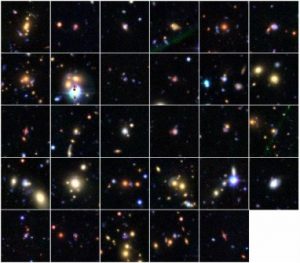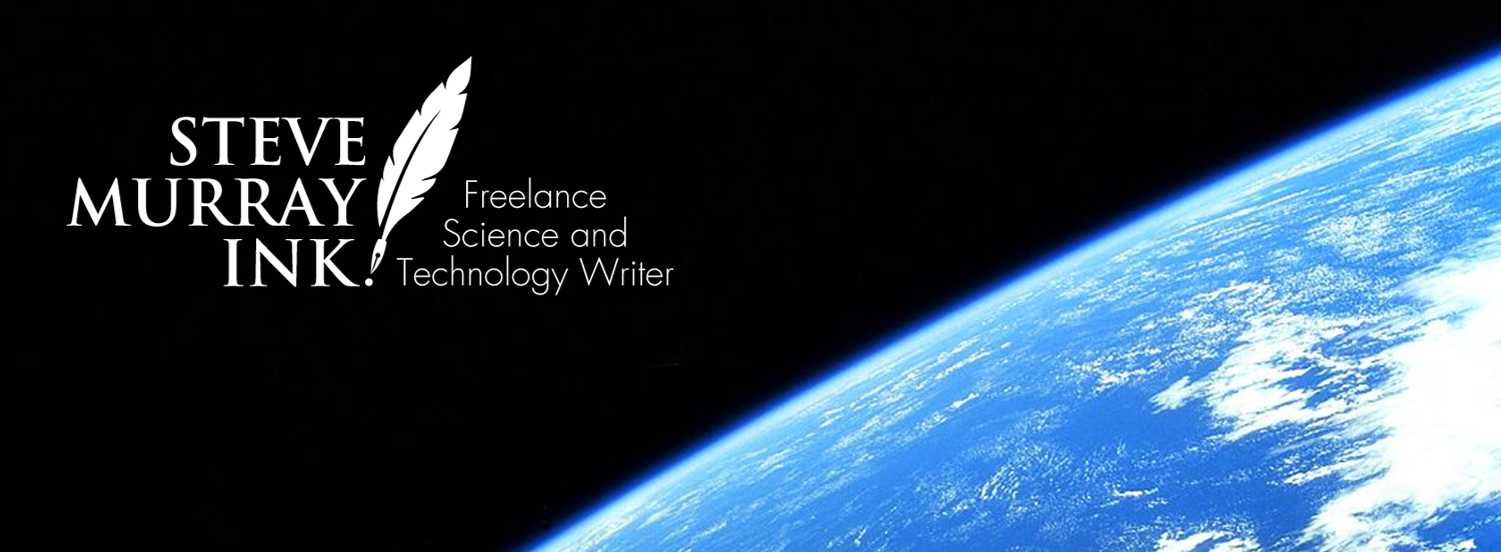September 25, 2015 by Steve Murray
Crowd-Sourcing Science

Twenty-nine gravitational lens candidates found through Space Warps
(Space Warps, Canada-France-Hawaii
Telescope Legacy Survey)
It’s called Space Warps and the program just helped an international science team to identify 29 new gravitational lense candidates with the help of interested amateurs. Around 37,000 interested amateurs examined 430,000 images to help professional astronomers focus their investigation. In the process, Space Warps illustrated a growing effort to involve citizen scientists in cutting-edge investigations.
Big searches, big data
The Canada-France-Hawaii Telescope Legacy Survey (CFHTLS) employed an optical imaging camera in a wide field sky survey over a five-year period. The survey accumulated a huge number of images during more than 2300 hours of observation, and then made the data set available for investigators.
Phil Marshall at the Kavli Institute for Particle Astrophysics and Cosmology, Stanford University, and Aprajita Verma at the Department of Physics, University of Oxford, were interested in using the data to find gravitational lenses, but gravitational lenses are rare; only about 500 have been discovered to date.
A gravitational lens bends light. The gravity of a large body of matter, such as galaxy, distorts the light coming from objects behind it. Gravitational lenses are an indirect way to study dark matter, which makes them interesting to astronomers. While dark matter emits no light, its presence may be revealed by the contribution it makes to the lensing effect.
Marshall and Verma tackled their enormous search task by helping to launch Space Warps and recruiting talented amateurs
Space Warps
Space Warps is a novel online tool that essentially crowd-sources visual inspection. Space Warps takes advantage of unique human strengths in visual scanning and pattern recognition.
Participants view color composite images and estimate the presence and position of distortions that might be products of gravitational lensing. Space Warps corrects for differences in participant bias or sensitivity by randomly inserting simulated images with lensing features and other, real images that lack such features. The tool provides instantaneous feedback to participants, which helps them to calibrate their performance and also helps to calibrate the Space Warps analysis model.
“Computer algorithms have been somewhat successful in identifying gravitational lenses, but they can miss lensed images that appear similar to other features commonly found in galaxies,” said Anupreeta More, co-principal investigator of Space Warps and project researcher at the University of Tokyo’s Kavli Institute for the Physics and Mathematics of the Universe.
The making of a citizen scientist
Space Warps gave the public a chance to participate directly in the scientific discovery process. The project also involved some participants in the analysis and reporting of results, involving them as integral researchers.
“All that was needed was the ability to recognize patterns of shapes and colors,” said citizen scientist and paper co-author Christine Macmillan from Scotland. “It was fascinating to look at galaxies so far away, and realize that there is another behind it, even further away, whose light gets distorted in an arc.”
“I benefited from this project with an increase of my knowledge and some experience on making models of lenses,” said citizen scientist and paper co-author Claude Cornen from France.
Details of the discoveries will be published in Monthly Notices of the Royal Astronomical Society.
The next collaboration
The research team will now examine some of the interesting gravitational lens candidates in more detail by observing them with telescopes. The team is also anxious to examine more data for new lense candidates, and will be working with volunteers in the near future on new images from other ongoing imaging surveys.
As big science generates big data sets, researchers are increasingly reaching out to an interested public for assistance. So far, the arrangement seems to be working for everyone. With time, citizen science may become an essential component of many research enterprises.
More opportunities
Opportunities for people to participate in active science research are available from a number of sources. Good places to start include:
- Citizen Science Alliance
- NASA Science – Citizen Scientists
- HubbleSite – Citizen Science
- Scientific American – Citizen Science
- Wikipedia (very comprehensive)
Primary source:
Discovery of potential gravitational lenses shows citizen science value
